YneA, an SOS-induced inhibitor of cell division in Bacillus subtilis, is regulated posttranslationally and requires the transmembrane region for activity
- PMID: 20400548
- PMCID: PMC2901685
- DOI: 10.1128/JB.00027-10
YneA, an SOS-induced inhibitor of cell division in Bacillus subtilis, is regulated posttranslationally and requires the transmembrane region for activity
Abstract
Cell viability depends on the stable transmission of genetic information to each successive generation. Therefore, in the event of intrinsic or extrinsic DNA damage, it is important that cell division be delayed until DNA repair has been completed. In Bacillus subtilis, this is accomplished in part by YneA, an inhibitor of division that is induced as part of the SOS response. We sought to gain insight into the mechanism by which YneA blocks cell division and the processes involved in shutting off YneA activity. Our data suggest that YneA is able to inhibit daughter cell separation as well as septum formation. YneA contains a LysM peptidoglycan binding domain and is predicted to be exported. We established that the YneA signal peptide is rapidly cleaved, resulting in secretion of YneA into the medium. Mutations within YneA affect both the rate of signal sequence cleavage and the activity of YneA. YneA does not stably associate with the cell wall and is rapidly degraded by extracellular proteases. Based on these results, we hypothesize that exported YneA is active prior to signal peptide cleavage and that proteolysis contributes to the inactivation of YneA. Finally, we identified mutations in the transmembrane segment of YneA that abolish the ability of YneA to inhibit cell division, while having little or no effect on YneA export or stability. These data suggest that protein-protein interactions mediated by the transmembrane region may be required for YneA activity.
Figures
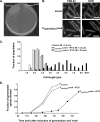


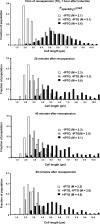
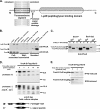
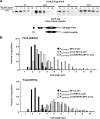
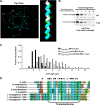

Similar articles
-
DNA damage checkpoint activation affects peptidoglycan synthesis and late divisome components in Bacillus subtilis.Mol Microbiol. 2021 Aug;116(2):707-722. doi: 10.1111/mmi.14765. Epub 2021 Jun 25. Mol Microbiol. 2021. PMID: 34097787 Free PMC article.
-
Identification of a protein, YneA, responsible for cell division suppression during the SOS response in Bacillus subtilis.Mol Microbiol. 2003 Feb;47(4):1113-22. doi: 10.1046/j.1365-2958.2003.03360.x. Mol Microbiol. 2003. PMID: 12581363
-
DdcA antagonizes a bacterial DNA damage checkpoint.Mol Microbiol. 2019 Jan;111(1):237-253. doi: 10.1111/mmi.14151. Epub 2018 Nov 15. Mol Microbiol. 2019. PMID: 30315724 Free PMC article.
-
SosA in Staphylococci: an addition to the paradigm of membrane-localized, SOS-induced cell division inhibition in bacteria.Curr Genet. 2020 Jun;66(3):495-499. doi: 10.1007/s00294-019-01052-z. Epub 2020 Jan 10. Curr Genet. 2020. PMID: 31925496 Review.
-
Cell Cycle Machinery in Bacillus subtilis.Subcell Biochem. 2017;84:67-101. doi: 10.1007/978-3-319-53047-5_3. Subcell Biochem. 2017. PMID: 28500523 Free PMC article. Review.
Cited by
-
Functional domain analysis of the cell division inhibitor EzrA.PLoS One. 2014 Jul 28;9(7):e102616. doi: 10.1371/journal.pone.0102616. eCollection 2014. PLoS One. 2014. PMID: 25068683 Free PMC article.
-
DNA damage checkpoint activation affects peptidoglycan synthesis and late divisome components in Bacillus subtilis.Mol Microbiol. 2021 Aug;116(2):707-722. doi: 10.1111/mmi.14765. Epub 2021 Jun 25. Mol Microbiol. 2021. PMID: 34097787 Free PMC article.
-
Splitsville: structural and functional insights into the dynamic bacterial Z ring.Nat Rev Microbiol. 2016 Apr;14(5):305-19. doi: 10.1038/nrmicro.2016.26. Epub 2016 Apr 4. Nat Rev Microbiol. 2016. PMID: 27040757 Free PMC article. Review.
-
Sending out an SOS - the bacterial DNA damage response.Genet Mol Biol. 2022 Oct 10;45(3 Suppl 1):e20220107. doi: 10.1590/1678-4685-GMB-2022-0107. eCollection 2022. Genet Mol Biol. 2022. PMID: 36288458 Free PMC article.
-
Regulation of Cell Division in Bacteria by Monitoring Genome Integrity and DNA Replication Status.J Bacteriol. 2020 Jan 2;202(2):e00408-19. doi: 10.1128/JB.00408-19. Print 2020 Jan 2. J Bacteriol. 2020. PMID: 31548275 Free PMC article. Review.
References
-
- Antelmann, H., H. Yamamoto, J. Sekiguchi, and M. Hecker. 2002. Stabilization of cell wall proteins in Bacillus subtilis: a proteomic approach. Proteomics 2:591-602. - PubMed
-
- Au, N., E. Kuester-Schoeck, V. Mandava, L. E. Bothwell, S. P. Canny, K. Chachu, S. A. Colavito, S. N. Fuller, E. S. Groban, L. A. Hensley, T. C. O'Brien, A. Shah, J. T. Tierney, L. L. Tomm, T. M. O'Gara, A. I. Goranov, A. D. Grossman, and C. M. Lovett. 2005. Genetic composition of the Bacillus subtilis SOS system. J. Bacteriol. 187:7655-7666. - PMC - PubMed
-
- Autret, S., A. Levine, I. B. Holland, and S. J. Seror. 1997. Cell cycle checkpoints in bacteria. Biochimie 79:549-554. - PubMed
-
- Bateman, A., and M. Bycroft. 2000. The structure of a LysM domain from E. coli membrane-bound lytic murein transglycosylase D (MltD). J. Mol. Biol. 299:1113-1119. - PubMed
-
- Bendtsen, J. D., H. Nielsen, G. von Heijne, and S. Brunak. 2004. Improved prediction of signal peptides: SignalP 3.0. J. Mol. Biol. 340:783-795. - PubMed
Publication types
MeSH terms
Substances
Grants and funding
LinkOut - more resources
Full Text Sources
Molecular Biology Databases

